MSNBC The Briefing 4/3/15
VIDEO: http://www.msnbc.com/the-briefing/watch/clinton-has-new-opportunity-with-millenials-422764611713
MSNBC The Briefing 4/3/15
VIDEO: http://www.msnbc.com/the-briefing/watch/clinton-has-new-opportunity-with-millenials-422764611713
3/30/2015 Medium by
Startups are hard. Really hard. They’re also exhilarating, fun, rewarding, and occasionally depressing. In 2011 I started Hyphos Inc, a web-based platform for connecting like-minded people offline. We ultimately launched At The Pool, went mobile, and pivoted into a local discovery app called Yeti. In the four years that we launched and grew these products, we touched members in more than 120 countries across 3,500 cities, raised capital from some pretty amazing investors, and had great press coverage without hiring a PR firm. We’re now in the process of getting acquired and I’ve been thinking a lot about what I would do different next time. In no particular order, here are the top 11 things I would do different next time:
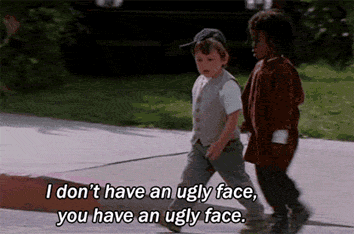

2. Recruiters — I don’t know how they find you, but when you launch a startup recruiters start calling. They’re relentless, expensive, and downright deceptive. In the beginning they’re easy to ignore (but trust me, they will keep coming). At some point, however, you’re going to be desperate to hire an engineer and you’ll say something like, “Ok, if you find someone who’s a really good fit I’ll agree to your fees”. Unless you’re sitting on $10M in funding (and even then, be careful), it’s a slippery slope towards draining the bank account. Fortunately we rarely took the bait, but when I did I always regretted it. Recruiters are a bad idea because (1) they’re downright expensive(about 20% of a hire’s first year salary), (2) the results and quality aren’t guaranteed, (3) as a founder you need to be selling, recruiters make you lazy, (4) once they get you they will keep calling, and (5) they will waste your time and energy.

3. Raise enough capital — Startups take capital. A lot more than you think. And there are only really a few times you can raise: friends and family when you start, a seed round when your product is just hitting the market, and a Series A when you have significant traction. Unfortunately most companies don’t make it to the traction step and are forced to raise a second seed round or go under. When we pivoted from At The Pool to Yeti we decided to hold off on raising more capital until we got traction. That meant building a world class app with pennies, cutting corners, and taking longer than would have been ideal. Sometimes this is necessary, but it’s certainly not fun and it puts you at a major disadvantage. Next time, I plan on doing this differently. I plan on raising enough capital to execute on the vision from the onset, understanding that fundraising is tough without serious traction and traction is hard without the resources to build an amazing product.

4. Simplify the Design — Beautiful design is more important than ever. That said, it’s easy to go overboard and get too creative with the UI and UX. Looking at the most successful products in the last 4–5 years, it’s amazing how simple and obvious most of them appear. Contrast that with the unnecessary complexity that plagues most bad products. Good design is easy to use and obvious to the user, and we weren’t always good at putting function before form. While I still believe in novelty and aesthetic beauty, next time I intend on reducing complexity and focusing on ease of use.
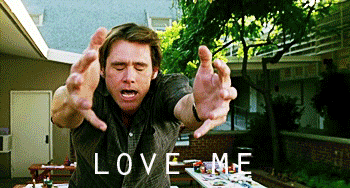
5. Build Something People Love — With startups we get caught up in the design, the legal work, the mission statement and the press releases. At the end of the day, none of that matters. The only thing that matters is building something people love. While there’s no simple way to guarantee this outcome, it’s certainly the first thing I will think about for the next product I work on.
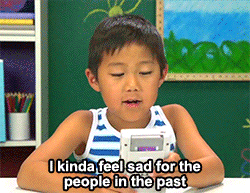
6. Technology — There are an amazing number of “technology” companies today that don’t actually invent new technology. While this isn’t necessary for all companies (a pizza shop doesn’t need to invent new technology, per se), it’s important to me. I would argue we got caught up in the social media hype of creating new user experiences and design patterns to enable a slightly novel interaction on the web. While this could yield high dividends, in my next pursuit I plan on focusing more heavily on innovative technology.

7. Do less —no matter how many times we’ve heard it, we need to hear it again. It’s amazing how we start with a simple idea, then we add a little feature, then another, and next thing we know the product is bloated and convoluted. It’s hard keeping a product simple because it takes conviction in the few features we choose to leave in. I plan on being particularly careful of this in my next venture.

8. Forget about partnerships —The number of discussions we’ve had with huge Fortune 500 companies is staggering. These are exciting, the idea of partnering with Coke or Wal-Mart could catapult your business, but they rarely materialize and when they do, they are rarely worth the effort. It’s a huge distraction, and one that I’ve seen destroy startups. Large companies don’t move fast, don’t like to spend money, and don’t like to take risk. If you’re building a consumer product, my advice is to forget about partnerships until you have serious traction.

9. Don’t Chase Investors —The worst time to raise capital is when you need it. We wasted a lot of time going after investors we thought would be a fit. We justified their experience, background, portfolio, etc. The reality is, by focusing on our product and engagement, getting coverage and delivering a great service, we were able to get investors to come to us. If you want to raise capital, I highly recommend starting with a great product and getting people using it. Once that happens, investors will come.

10. Don’t Expect Much — I’m sorry to tell you this, but entrepreneurship is a lonely road. Having investors, advisors, employees, and other entrepreneurial friends is great, but be prepared to fight most battles on your own. If you expect hand holding, or you believe your investor when they say “Give me 2% more equity as an advisor and I’ll REALLY help out”, don’t believe them. It’s not that they don’t mean well, they do, but the reality is you have to make the business succeed. I know this and I understand this, but it doesn’t change the fact that I am working on a Sunday night well past midnight with a look that Johnny Depp depicts well.

11. Make Money — Snapchat, Facebook, Instagram, Twitter… The startup community is plagued with “successful” companies that took years to turn a profit (if they got there at all). The problem with this model is it relies on investor capital. The more success you have, the more capital you need. It’s a vicious cycle. Next time I plan on focusing more heavily on monetizing early in order to build a self-sustaining venture that won’t require outside capital.
I am proud of what we accomplished and would definitely do a few things the same again. Here are 5 things I wouldn’t change:
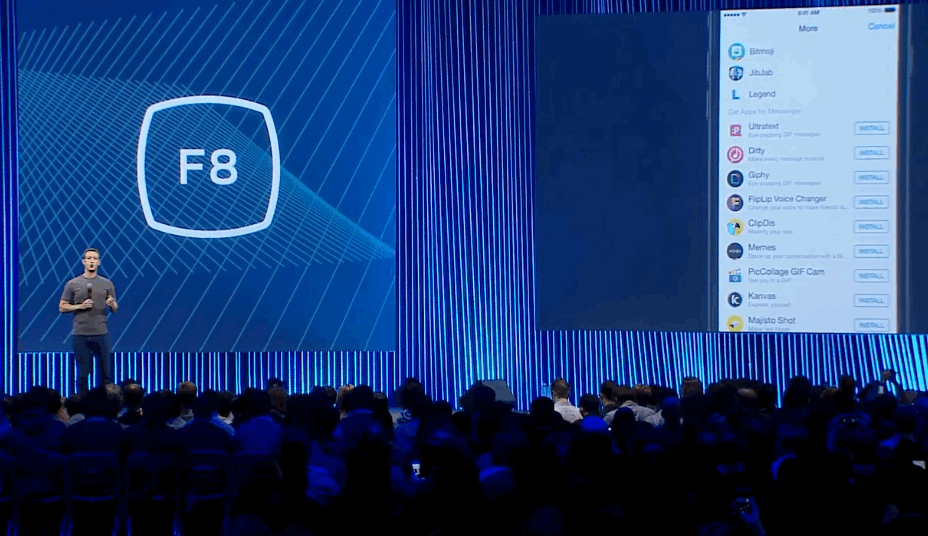
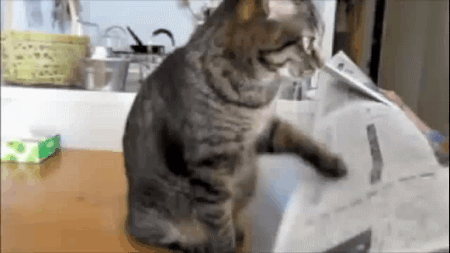
2. Press —Some would argue the importance of getting good press, but I believe it’s invaluable. Besides users and new customers, press helps to tell your story and motivate your staff. It’s a great validator for social media, and adds legitimacy to your business. We were fortunate to get some great press coverage over the years and it’s definitely something I think we should continue to do in the future.

3. Work with Amazing Advisors — advisors make all the difference. They helped us think through technical and recruiting problems, business opportunities, investing and acquisition discussions, and so much more. I feel honored to have had a number of truly helpful advisors in this venture and hope to establish the same with future projects.

4. Build Beautiful Products —With this company, we always had design at the forefront of what we did. From business cards to apps to email newsletters. If your product isn’t emotionally captivating and delightful to use, it’s unlikely to make an impact. I am proud of how our products look and plan on making that a major focus on future endeavors.

5. Stay Scrappy — A single $50k investment lasted us 14 months. This wasn’t easy, and it certainly wasn’t fun, but it made all the difference. Operating lean and figuring out how to keep costs down was a major contribution in this venture and it will serve me well to do the same next time.
Entrepreneurship isn’t a battle. It’s not a war. It’s also not glamorous and it’s certainly one of the hardest things you can do. That said, it IS a community and through the help of those who have come before, we can avoid making the same mistakes and help each other build world changing innovations. If I can ever be of help, feel free to reach out at ac@alexcaps.com or on twitter at @alexcapecelatro. Stay tuned to hear the exciting news about what’s coming next ☺
— Alex Capecelatro, CEO of Yeti
https://medium.com/@acaps/doing-things-different-fbf9fea4410e
3/27/2015 The Wrap By
When mainstream investors lose their money, or get bilked and sue, it’s going to make trouble for the film biz
The public can bankroll movies now and count on getting rich doing it, thanks to the approval of a key provision in President Obama’s JOBS Act this week that allows nearly every American to invest in films and other startup businesses.
But the new regulations approved by the Securities and Exchange Commission aren’t necessarily a good thing for the public. First, they may not be able to afford qualifying. And if they do qualify, they’re far more likely to lose money than they are to get rich in the extremely high-return, higher-risk film business.
While lowering the standards that formerly restricted film investing to the wealthy in order to protect the little guy creates a new revenue stream, both indies and the studios could be hurt in the long run.
“It is a very treacherous path to go down that could have negative consequence for all involved — filmmakers, studios, fan investors and movie institutions,” said Seth Willenson, an industry consultant with decades of film funding experience.
There are several reasons that going mainstream for movie investments may not be a great idea for John and Joanne and the movie industry:
Most Investors Will Lose Their Money
“Like giving money to a homeless guy and hoping he’ll return it,” is how film investing is described by consumer watchdog site YourInvestmentAdviSe.com. That the vast majority of movie projects fail to make money, and a good number never get made, is a harsh reality known by the pros and about to be learned by the amateurs.
It’s not that most movie producers are trying to bilk investors. But thousands of movies are produced every year with earnestness, sincerity, and absolutely no hope of finding a market. With funding more available, there are sure to be more movies made, and the last thing the industry needs is more movies without audiences.
“Fast forward two years, and you’ll see losses, fraud and failures, that’s the reality of investing in movies,” said Crowdfunder.com founder Chance Barnett, an early advocate for the new regulations. “A key will be how the industry responds. And it will be disappointing if people say ‘equity was a bad idea,’ because that won’t be the problem.”
Bad Actors Will Play Key Roles
Hollywood and film financing has always attracted its share of “Music Man” types. And in addition to the bad actors that populate many of the movies that lose money, there are “bad actors” – as in con artists – in the crowdfunding world as well. The new regulations are sure to bring out more of them.
“There will be lawsuits and fraud, on both sides of the table,” Slated.com chief executive Duncan Cork told National Public Radio. Filmmakers looking to fund their projects often have to defend Hollywood’s notoriously opaque accounting methods, and if the new regulations produce a spate of suits, it’s going to make it tougher for everyone to fund their movies, crowdfunding or old-school.
And if there are enough consumer lawsuits, Hollywood could well find itself the target of a high-profile probe by headline-seeking prosecutors and trust-busters in Washington D.C.
High Art Will Not be the Priority
No one wants to be a snob, but if pop culture becomes the driving force behind film funding, which movie will be more likely to be made, the one by Ariana Grande, or the one from John Ridley? Having a camera and film does not make someone a filmmaker any more than having a pencil and a paper makes someone as poet, but the risk involved is considerably different.
The Details Are Devilish
“The qualification requirements include items more onerous than those required for even a simple private placement,” notes David Albert Pierce of the Pierce Law Group, which specializes in film financing.
“For example, certified financial statements must be produced by a CPA every year. No small company can ever afford to put out certified public accounting statements each year — they hardly have enough cash to have simple tax returns filed by an accountant,” said Pierce, an advocate of the current donor-based system.
And while the new regulations appear to take the individual states out of the qualifying process for those seeking financing and investors, there will be nothing stopping zealous attorney generals from prosecuting after the fact if requirements aren’t met.
“The non-legal entities popping up promising to put together slick materials for your crowdfunding efforts, but which lack compliance with federal and state securities laws, place producers utilizing such services in peril,” said Pierce.
The Blame Game
So the movie doesn’t work and the investment is lost. What happens then?
“When sophisticated investors lose money on a deal they think, ‘What did I miss?’ and then they move on to the next opportunity the wiser for it,” said Cork. “When unsophisticated investors lose their money they think, ‘Who can I blame?’” That could result in an explosion of litigation in which only plaintiff attorneys will win.
But not everyone agrees. “I have heard all those negative concerns, the SEC heard them too and still moved forward,” said Gregory Parker, co-founder and chief executive at IndieCrowdFunder.com “If you’re risking $25, I don’t think you’re going to sue. The donation crowdfunding model is cheating people out of more than that with little repercussions. At least there are some safeguards in equity.”
http://www.thewrap.com/why-mom-and-pop-film-funding-may-not-be-good-for-hollywood/
3/29/2015 Vox
Podcasts have been around for a decade. But all of a sudden, people are sitting up and taking notice.
In the past few months, at least two media companies focused on podcasts have launched — Gimlet Media, which chronicled its own early days on the podcast “StartUp,” and Slate Magazine’s Panoply. It’s starting to feel like a golden age of podcasting is upon us.
But with hundreds of fascinating podcasts out there, getting started can feel intimidating. So here’s our best attempt to sort through them. There are podcasts to listen to on your commute, while you’re cleaning the house, while you’re cooking dinner, and even when you’re trying (and failing) to fall asleep. The only criteria for inclusion is that they have to have an established archive of at least five episodes, so 1) it’s easy to tell what you’re getting yourself into, and 2) you can binge-listen if you want. (And yes, categorizing podcasts is tricky, so most of these could fit into several categories.)

Alec Baldwin is also the host of an interview podcast. (Stephanie Keenan/Wireimage via Getty Images)
The writer and screenwriter and a different guest each week talk about entertainment and the creative life, often about movies. They’re long, interesting, and analytical conversations. It hasn’t been updated since November, but there’s a deep archive of nearly 50 previous podcasts to dive into.
Episodes are around an hour.
“Here’s the Thing” with Alec Baldwin
In “Here’s the Thing,” Alec Baldwin interviews mostly boldfaced names — Ira Glass, Lena Dunham, Billy Joel — but people rave about his interviewing style. This is the podcast I hear about most frequently from people who don’t generally listen to podcasts. An interview with the head of People for the Ethical Treatment of Animals “brought a perspective to extreme movements and their role in changing society that I still think about probably a year later,” says Vox engagement editor Allison Rockey.
Episodes used to be an hour but are now running slightly shorter, around 45 minutes, and are released every two weeks.
“Love+Radio”
“Love+Radio” features long interviews, many with people you’ve never heard of — an at-home strip club manager, a black man who befriended the KKK — produced into long audio stories. The production values are amazing, and the result is an incredibly intimate look at other people’s lives. There really isn’t anything else like it. “If you like hearing other people’s secrets, you’ll probably like listening to this,” says Vox video editor Joe Posner.
Episodes are around half an hour, released about twice a month.
“You Made It Weird” with Pete Holmes
Vox Editor-in-Chief Ezra Klein described this podcast so well I’m just going to let him take it from here: “Comedian Pete Holmes talks with people — mostly comedians — for absurdly long periods of time. Episodes routinely blow past the two-hour mark. It sounds horrible. It’s actually awesome. Holmes is a fantastic interviewer who recognizes the most interesting thing about interesting people is rarely their work. So instead, Holmes tends to talk to them about the subjects he’s interested in: religion, pain, death, family, shame, confidence, dating, insecurity, sex, etc. It’s basically a podcast about the core questions of human existence. It also convinced me Dana Carvey is pretty much the wisest man alive.”
New episodes are released weekly.

(Shutterstock)
“Call Your Girlfriend”
Ann Friedman and Aminatou Sow are writers and long-distance friends who catch up with each other every few weeks on “Call Your Girlfriend.” “You’ll enjoy this podcast if you like listening in on candid conversations about everything from Beyoncé to how to make friends as an adult to Shine Theory,” says Vox social media staffer Lauren Katz. “And if you miss your long-distance best friend, you can listen to this podcast together and feel slightly better.”
Episodes are around 40 minutes.
“My Brother, My Brother, and Me”
“My Brother, My Brother, and Me” is a comedy advice podcast starring three brothers that comes highly recommended by several Vox staffers as one of the funniest podcasts out there. Hosted by Justin, Travis, and Griffin McElroy. (Griffin and Justin both work at Polygon, a Vox Media company.)
Episodes are around an hour, released weekly on Mondays.
“Yo, Is This Racist?”
Andrew Ti uses a question about racism that an anonymous listener sends via voicemail to jumpstart a very candid conversation about the issue. “My favorite podcasts are usually really entertaining people talking to each other as if they were getting drinks at a bar,” says Vox motion graphics designer Estelle Caswell. “This is that type of podcast.” She recommends you start with this episode about the narrative of white privilege.
Episodes are under 15 minutes and are released frequently; there are more than 300 in the archive.

At this point it’s basically cheating to recommend This American Life, but most of these podcasts owe a debt to Ira Glass. (Todd Oren/Getty Images Entertainment)
“99% Invisible”
“99% Invisible,” hosted by Roman Mars, is a podcast about design, told in a medium with no pictures. It’s been getting attention for a couple of years for the innovative ways it tells stories. There is an episode about the musical groans emitting from Metro escalators, and about “hacking” Ikea furniture, and about Wonder Bread — all kinds of everyday things you’ve never thought twice about.
Episodes come out weekly on Wednesdays and tend to be pretty short, less than 10 minutes.
“Criminal”
“Criminal” is a true-crime podcast with episodes exploring everything from famous murder cases (including the murder featured in The Staircase) to little-known true crime (a Venus Flytrap theft ring).
Episodes are between 15 and 20 minutes long and have been produced about once a month so far.
“Reply All”
“Reply All” is a podcast about how we live on the internet from Gimlet Media, a new podcasting startup. It’s sort of the This American Life of the internet, telling stories about an app that lets you send a stranger to deliver a message, or about both sides of an internet dating scam.
Episodes are usually between 20 minutes and a half hour, and usually come out weekly.
“StartUp”
A former producer for This American Life and Planet Money, Alex Blumberg started a podcasting company and did a podcast about it while the business was getting off the ground. Its first 13-episode series focused on Blumberg’s own startup; future seasons will look at different businesses. It’s a great insight into both the world of startups and the world of media.
The first season is over now, but there are 13 episodes available to listen to. They’re about half an hour long.
“The Sporkful”
A fun podcast about food, hosted by Dan Paschman of the Cooking Channel, “The Sporkful” covers everything from what’s inside the CIA cafeteria to the science of why greasy food is delicious to which kind of potatoes make the best hangover cure. Don’t listen on an empty stomach. (Another food podcast I’m looking forward to trying is “Burnt Toast,” from Food52, but it only has a few episodes out so far.)
Episodes are around half an hour, released weekly.

Actor Cecil Baldwin performs a live version of “The Librarian” episode of his podcast “Welcome to Night Vale.” (Adam Berry/Getty Images Entertainment)
“Welcome to Night Vale”
“Welcome to Night Vale” is a scripted, fictional podcast about the weird goings-on in Night Vale — a sort of creepy parody of small-town community radio. It’s one of the most consistently recommended podcasts, even though — or maybe because — it doesn’t have much in common with the roundtables, interviews, and reporting that dominate podcasts today. And it comes highly recommended by culture editor Todd VanDerWerff.
New episodes released (about 20 to 25 minutes long) released twice a month. Start from the beginning.

You should be watching The Americans and also listening to the podcast about it. (Patrick Harbron/FX)
“Rebel FM”
A gaming podcast recommended by Vox staff writer German Lopez: “It’s probably one of the most informative dives into video games and the game industry each week, usually with a personal touch so it’s not just mindless droning about what makes some video games great. It also sometimes has special guests from the game industry.”
Episodes are long — up to two hours — and released weekly.
“Pop Culture Happy Hour”
The important thing about a roundtable podcast is that the people you’re listening to feel like good company. NPR’s “Pop Culture Happy Hour” is a lively discussion about books, TV, movies, comics, and just about everything else hosted by Linda Holmes and a rotating cast of regulars. It helps if you’ve read or watched what they’re discussing that week, but you certainly don’t have to. It’s like listening in on a dinner party discussion that’s way more interesting than your dinner parties.
Full episodes, released weekly, are about 45 minutes; small-batch episodes are often under 10 minutes.
“Song Exploder”
On this podcast, musicians talk about how their songs were made — from the Postal Service on “The District Sleeps Alone Tonight” to composer Alexandre Desplat on his score for the movie The Imitation Game. It gives insight into the creative process, says Winston Hearn, a front-end developer for Vox Media.
Episodes are released every few weeks and are about 20 minutes long.
“The Americans: Slate TV Club Insider”
Okay, a podcast focused on a TV show with a tragically small audience is a bit of a niche recommendation. But if you love FX’s story about Cold War spies in the 1980s — and if you’re not watching it, you really should be — this podcast from The Americans‘ showrunners makes watching an even richer experience. Even if you don’t watch the show, though, the podcast is worth it for its candid, in-depth discussions of what it takes to make a great TV show — from acting to stunts to production design.
Episodes are released weekly on Thursdays and run about half an hour, though some have been longer.

Unfortunately, you can’t see any charts while you’re listening. (Shutterstock)
AEI’s “Banter”
A fun, chatty podcast recommended by Vox’s Tim Lee: “Run by two smart young staffers at AEI, it’s a great way to keep up with what’s happening in right-of-center policy circles.”
Episodes are under 25 minutes and come out a few times a month.
“Arms Control Wonk”
A podcast recommended by Max Fisher, who oversees Vox’s foreign coverage: “It’s funny, pithy, conversational, and super-nerdy. They discuss major foreign policy issues that relate to arms control, which these days is a lot of them. The tone is approachable and lighthearted enough that anyone who follows basic foreign news can enjoy it, but also gets in-depth enough that you end up learning a lot.”
Episodes can run up to an hour and come out a few times a month.
“Inquiring Minds”
A science and public health news podcast that brings in experts and researchers to discuss the biggest science topics of the week. Recommended by Vox’s German Lopez, who says it’s a relatable way to get science news.
Episodes are about an hour and come out weekly.
“Do You Like Prince Movies?”
Grantland’s pop culture podcast, from writers Alex Pappademas and Wesley Morris. A little more news-focused than NPR’s “Pop Culture Happy Hour,” with segments on recently released movies and the pop culture news of the week, and great banter.
Episodes are released weekly and are slightly over an hour.

(ullstein bild/Getty Images)
“BackStory”
“BackStory” is a podcast where three historians — one each for the 18th, 19th, and 20th centuries — trace one theme through American history, whether it’s how we tell time, how we shop, or how we define the middle class. It’s hosted by Ed Ayers, president of the University of Richmond, and two history professors at the University of Virginia, Peter Onuf and Brian Balogh. Every episode feels like it could be adapted into a fascinating book without too much trouble. If you’re at all interested in history, every episode is packed with fascinating facts.
Episodes are usually about an hour and come out weekly, although many are rebroadcasts. Archives go back to 2008.
“Revolutions”
Every week, “Revolutions” takes you inside a political revolution — right now it’s focusing on the French Revolution, the archives include the English Civil War, and Haiti is up next. It’s very detailed — so far, the podcast has spent 31 episodes on the French Revolution alone — but gets rave reviews for being engaging. Recommended by Vox editor Tim Lee.
Episodes are around half an hour and come out about every week.
“The Memory Palace”
“The Memory Palace,” hosted by Nate DiMeo, tells stories from the past that you’ve never heard — the history of eating lobsters, or the riots that started in 1964, or about historical fears of being buried alive. (The last one, full of real-life ghost stories, will haunt you for a long time.) They’re beautifully written and elegiac, read in a relaxing voice, sort of like bedtime stories from the world’s most fascinating history book.
Episodes come out infrequently (monthly at best) and are short, but there’s a vast archive if you’re a newcomer.
“You Must Remember This”
Stories from “the first century of Hollywood” — from silent films up to the present day — are featured on this podcast by Karina Longworth, a former film critic for LA Weekly. Many episodes focus on stars from Hollywood’s studio system era (Hedy Lamarr, Humphrey Bogart, Lauren Bacall) but some include more recent memories, including a two-episode feature on Madonna. The podcast gets rave reviews for its production values and insight.
Episodes come out weekly and run from half an hour to 45 minutes or so.
http://player.ooyala.com/iframe.js#pbid=a637d53c5c0a43c7bf4e342886b9d8b0&ec=85Nm15cTpHaPft1_EejvZNpRYjqf8bTc
Correction: This post originally stated that “Revolutions” covered the Glorious Revolution, rather than the English Civil War. It has been corrected and updated.
http://www.vox.com/2015/3/29/8308033/podcast-reviews-recommendations
3/30/2015 MRC News Buster
Media Research Center (MRC) and Family Research Council (FRC) are launching a joint national campaign to educate the public about a Disney ABC sitcom pilot based on the life of bigoted activist Dan Savage. MRC and FRC contacted Ben Sherwood, president of Disney/ABC Television Group, more than two weeks ago urging him to put a stop to this atrocity but received no response. [Read the full letter]
A perusal of Dan Savage’s work reveals a career built on advocating violence — even murder — and spewing hatred against people of faith. Savage has spared no one with whom he disagrees from his vitriolic hate speech. Despite his extremism, vulgarity, and unabashed encouragement of dangerous sexual practices, Disney ABC is moving forward with this show, disgustingly titled “Family of the Year.”
“Disney ABC’s decision to effectively advance Dan Savage’s calls for violence against conservatives and his extremist attacks against people of faith, particularly evangelicals and Catholics, is appalling and outrageous. If hate speech were a crime, this man would be charged with a felony. Disney ABC giving Dan Savage a platform for his anti-religious bigotry is mind-boggling and their silence is deafening.
“By creating a pilot based on the life of this hatemonger and bringing him on as a producer, Disney ABC is sending a signal that they endorse Dan Savage’s wish that a man be murdered. He has stated, ‘Carl Romanelli should be dragged behind a pickup truck until there’s nothing left but the rope.’ ABC knows this. We told them explicitly.
“If the production of ‘Family of the Year’ is allowed to continue, not just Christians but all people of goodwill can only surmise that the company Walt Disney created is endorsing violence.”
Family Research Council President Tony Perkins reacts:
“Does ABC really want to produce a pilot show based on a vile bully like Dan Savage? Do Dan Savage’s over-the top-obscenity, intimidation of teenagers and even violent rhetoric reflect the values of Disney? Partnering with Dan Savage and endorsing his x-rated message will be abandoning the wholesome values that have attracted millions of families to Walt Disney.”
Dan Savage has made numerous comments about conservatives, evangelicals, and Catholics that offend basic standards of decency. They include:
http://newsbusters.org/blogs/kyle-drennen/2015/03/30/disney-abc-embraces-hateful-x-rated-bully-new-prime-time-show
3/24/2015 Deadline

Alchemy has entered into a multiyear joint venture with The Swirl Group to create and acquire material that appeals to urban audiences. Under terms of the deal, home entertainment rights to seven of The Swirl Group’s completed films go to Alchemy: Saving Westbrook High, My Dad’s A Soccer Mom, The Dempsey Sisters, The Love Letter, Marry Me For Christmas, Comeback Dad and Where’s The Love? In addition, they have plans to produce and acquire 10 to 15 more films per year.
The move comes only a month after UCLA’s Ralph J. Bunche Center for African American Studies released their second annual Hollywood Diversity Study which showed an under-representation of minorities of a ratio of more than 2-to-1 and that movies with a larger percentage of diversity in casting did the best at the box office. It also comes as Marvel announced late last year that 42‘s Chadwick Boseman will be the first African-American superhero to lead a stand-alone Marvel tentpole in 2017’s Black Panther. What better way to diversify the world than with a black superhero? Marvel is also expected to raise the profile of Falcone in the Captain America universe.
The announcement was made by Alchemy CEO Bill Lee and Eric Tomosunas, CEO of The Swirl Group, and Brett Dismuke, President and COO of The Swirl Group.
Swirl is headquartered in Atlanta, GA. As part of this deal the company will maintain offices at Alchemy’s headquarters in Los Angeles as well.
http://deadline.com/2015/03/alchemy-pacts-with-swirl-to-develop-films-with-an-urban-bent-1201398022/
1/15/2015 Deadline
Charlize Theron’s Denver & Delilah Films has signed a first-look deal with Universal Cable Productions to develop and produce scripted series for NBCUniversal as well as outside networks. With former CBS SVP drama Laverne McKinnon recently coming on board as head of scripted television, Denver & Delilah, in which Theron is partnered with Beth Kono and AJ Dix, has set up projects at NBC, Bravo, Amazon and USA.
The pact reunites Theron with Dawn Olmstead, UCP’s EVP of Development. Two seasons ago, when Denver & Delilah was under a deal at ABC Studios, the company teamed with Olmstead for a modern Hatfields & McCoy drama project, which went to pilot at NBC.
“I had the pleasure of working with Charlize recently and was determined to keep working with her once I joined Universal Cable Productions,” said Olmstead. “Charlize, Beth, and AJ’s taste in material is stellar.”
Here are Denver & Delilah’s projects in development:
– Diblings, a romantic comedy for NBC written by Andrea Abbate (Accidentally on Purpose), about a young, uptight business man and a rebellious purple-haired tattoo artist who will never be together but can’t stand being apart.
– The One, a drama series for Bravo written by Roger Wolfson (The Closer) that explores what it takes to succeed in the cutthroat world of billionaires and CEO’s through the eyes of those who are often overlooked…the assistants. A young woman and struggling street artist is hired to be the assistant to a visionary but enigmatic tech genius. The surprising relationship that forms between them begins to threaten everything the company has built.
– Pandora, an action thriller series for Amazon written by Josh Pate (Legends), about former CIA agent Pandora whose curiosity unleashes worldwide “sleepers” who are the personification of all evils. As she battles to put the evils “back in the box,” she discovers that this was all architected by someone hell bent on vengeance against her. Jonas Pate (Aquarius) is attached to direct.
– Mythos for USA Network, written by Spenser Cohen and produced by Anna Halberg is a high stakes, serialized adventure drama that reveals all we believed to be myth, from the Fountain of Youth to Atlantis, to be closely guarded truth, protected by two opposing orders, each with differing agendas for humanity
– Other projects in development with Universal Cable Productions include a blind script deal with comic book writer Greg Rucka, Get Well Soon written by Erika Cervantes and based on the book by Julie Halpern with Brendan Deneen from MacMillan Publishing attached to produce, and the novel A Life In Men by Gina Frangello.
McKinnon was most recently EVP of Original Programming and Development at EPIX.
http://deadline.com/2015/01/charlize-theron-first-look-deal-universal-cable-prods-1201350881/
1/16/2015 The New York Times By Anna North
Writing about your feelings, a practice long embraced by teenagers and folk singers, is now attracting attention as a path to good health. And a recent study suggests that reflecting on your emotions could help you get over a breakup. But, one of its authors says, journaling can have its downsides.
Is structured self-reflection, as some suggest, a healthy tuneup for the heart and head — or can it make hurt feelings worse?
For a study published in the journal Social Psychological and Personality Science, Grace M. Larson, a graduate student at Northwestern University, and David A. Sbarra, a psychology professor at the University of Arizona, looked at self-reflection through a speaking exercise. They recruited 210 young people (they ranged in age from 17 to 29) who had recently broken up with their partners, and then split this brokenhearted sample into two groups.
One filled out a questionnaire on how they were feeling, then completed a four-minute assignment in which they were asked to talk into a recording device, free-associating in response to questions like, “When did you first realize you and your partner were headed toward breaking up?” This group repeated the same exercise three, six and nine weeks later.
The second group filled out the questionnaire at the beginning and the end of the nine-week study period (they did the speaking exercise only once, after filling out their final questionnaires).
Ms. Larson and Dr. Sbarra found that the breakup sufferers in the first group experienced greater improvements in “self-concept clarity” than those in the second. Dr. Sbarra defines self-concept clarity as “the degree to which you understand yourself as a person.” He and Ms. Larson measured it by asking subjects how much they agreed with statements like “I do not feel like myself anymore” or “I have regained my identity.”
Much of our understanding of ourselves can be bound up in our relationships with our partners, Dr. Sbarra explained — and if we break up, it can be hard to answer questions like “Who am I?” or “Who are my friends?” or “How should I spend my time?” The speaking exercise helped people, he explained, because “it improved their sense of self independent of their former partner.”
That improved sense of self, in turn, led to reductions in loneliness and “emotional intrusion.” As for why the exercise worked, Dr. Sbarra has a few theories. “There is a degree of habituation that takes place as you are repeatedly thinking and talking about the process” of a breakup, he said. “You defang it a little bit.” And, he added, hearing yourself say something may prove revelatory. He imagines a subject’s internal monologue: “I didn’t know I seemed to be getting better until I said I seemed to be getting better. I must be getting better.”
For people going through breakups without the benefit of psychology researchers to record their thoughts, Dr. Sbarra says the study offers some insights. Getting back your sense of self after a breakup, he argued, is crucial: “You really need to figure out a way to pull yourself back together and to try to get some reorganization in terms of who you are, what you do, how you spend your time.” You may not need a recording device to do that — Dr. Sbarra believes that you might also be able to rebuild your self-concept by writing, “in a stream-of-consciousness way, how you’re feeling about things.”
Other researchers see benefits from self-reflective writing beyond soothing post-breakup pain — and the practice is drawing media attention, too. At the news website Mic, Rachel Grate cites research by a team from New Zealand showing that writing exercises may aid wound healing. She also quotes the psychologist James W. Pennebaker of the University of Texas at Austin: “When people are given the opportunity to write about emotional upheavals, they often experience improved health.”
According to James Hamblin at The Atlantic, a 2012 study found that writing improved quality of life for breast cancer patients. Laura I. Miller at the website Bustle offers 12 reasons we should all resolve to write more in 2015. And “if writing about the difficult parts of your life were a drug,” writes Drake Baer at Business Insider, “it would be making bank for some faceless pharmaceutical company.”
But if it were a drug, it might be one with a maximum recommended dosage — and warnings for certain patients. In another study, Dr. Sbarra found that divorced people assigned to do expressive writing exercises — essentially, exercises wherein they reflected on their feelings — showed no greater improvement in measures of emotional well-being than those asked to write, without emotion, about what they did during the day. And subjects who tended to ruminate on their situation actually did better if they were assigned to the emotion-free writing.
The prompts in the expressive writing study were more involved than those in the speaking-exercise one — instead of responding to simple questions, participants were asked to “really delve into your deepest emotions and thoughts” or to “work toward creating a coherent story and narrative, with yourself as the storyteller.”
“I think the expressive writing intervention at times can be too heavy-handed,” said Dr. Sbarra. “It can be too directive without allowing people’s natural coping tendencies to do what they’ve done over the course of evolutionary history.” And for some people, reflecting too much on their feelings can make things worse. “That’s the real danger of our journaling culture,” he added — diary writing isn’t “one size fits all.”
For many, the key may turn out to be some self-reflection, but not too much: writing about your feelings, “but then not necessarily mulling over it or doing any more. Just write it, talk about it, leave it, do it again.”
“There’s a really delicate balance between avoiding and getting over-involved for every stressful event,” Dr. Sbarra explained, “and so you touch on it, you think about it, you put it out there, you reflect, and then you sort of create some distance.”
So if you ever get a prescription for writing, it might read: Spend a little time with your diary — and then go for a walk.
http://op-talk.blogs.nytimes.com/2015/01/16/the-best-way-to-get-over-a-breakup/?smprod=nytcore-iphone&smid=nytcore-iphone-share
1/23/2015 The Wrap By
“It’s sort of like the new Gold Rush,” truTV’s president and head of programming Chris Linn tells TheWrap
The television industry is catching up with film and learning that pot sells in Hollywood. As more states join the legal marijuana movement and the drug becomes less taboo in the country, entertainment industry insiders say interest in weed-related storylines is at an all-time high.
Showtime series “Shameless,” for instance, which follows Chicago’s dysfunctional Gallagher family and stars William H. Macy and Emmy Rossum, will embark on a major weed arc later this year. The network is also responsible for the mother of all television pot tales, “Weeds,” which starred Mary-Louise Parker as soccer-mom-turned-drug-dealer. The series blazed trails (and spliffs) from 2005 to 2012 and helped put Showtime on the original-programming map.
Showtime isn’t the only pot-obsessed programmer, though; CNBC is in Season 2 of its series “Marijuana in America,” and “60 Minutes” struck ratings gold with a recent pot segment that drew in a whopping 17 million viewers.
But, do audiences have the munchies for more of the chemically enhanced TV product?
“It’s sort of like the new Gold Rush,” Chris Linn, truTV’s president and head of programming, told TheWrap. “There is great curiosity around it right now.”
That curiosity prompted the network to recently shoot a pilot for a new reality show called “Medicine Man,” about a dynastic family pot dispensary.
“Right now TV is well ahead of the game when it comes to pushing the envelope,” said Elayne Rapping, pop culture author and American Studies professor emeritus at the University of Buffalo. “Hollywood is definitely going to see a rise in pot-related stories.”
Once considered a gateway to harder drugs, pot is going mainstream with 23 states and the District of Columbia having either legalized medical marijuana, decriminalized it or both, according to the National Cannabis Industry Association. Four more states — Alabama, North Carolina, Nebraska and Ohio — have decriminalized pot possession.
“It’s no longer a niche culture,” Linn said. “What’s so interesting to us about ‘Medicine Man’ is that the family wants their dispensary to become the Starbucks of weed. This is definitely a space we’re interested in and want to explore.”
While Linn’s show is set in Colorado, California was the first state to establish a medical marijuana program in 1996, a move that experts say brought about a boom in pot-centric Hollywood plot lines.
The film industry had explored the topic going all the way back to 1936’s unintentionally funny “Reefer Madness,” through the 1980s exploits of high-larious comedy duo Cheech and Chong, into comedies produced by and starring black actors like Ice Cube‘s “Friday” series and rapper–marijuana advocate Snoop Dogg’s thespian turns, and on to the THC-induced misadventures of characters portrayed by some of today’s most visible stars like Seth Rogen and James Franco.
But while casual pot use has permeated mainstream film for decades and was explored as a gateway drug in some of the industry’s more sobering cautionary drug-use dramas, TV — aside from the frequent dealer-villains and sad-sack addict stereotypes — for the most part just said no.
“Weeds” was a game-changer with its white, middle-class mom-dealer, portrayed more as spunky survivor and entrepreneur. The Season 4 premiere attracted 1.3 million viewers, the channel’s highest-ever viewership at the time, with the season as a whole averaging 962,000 viewers. And because “Weeds” aired on premium cable, its writers weren’t constrained by overzealous censors or squeamish advertisers. The storylines got darker as perky Nancy Botwin unraveled from season to season.
Showtime was “doing it way before it was acceptable,” explained “Shameless” executive producer, Nancy Pimental.” “Now that it’s gone mainstream, we’re going to see a lot more of it.”
It hasn’t always been that easy to portray the high life in prime time. Fox comedy “That ’70s Show,” which aired from 1998-2006 and explored relations among a group of Wisconsin teens, sent producers scrambling to find creative ways to portray pot use without actually saying or showing it. Even though the show’s main characters got stoned almost every episode (mostly in Eric’s basement), viewers were hard-pressed to find any mention of marijuana. Censors initially approved the scenes, as long as no one actually spoke of it.
“They never passed a joint,” revealed actor Tommy Chong, of Cheech and Chong fame who played aging hippie Leo on the sitcom. “They just sat in a circle and the camera did closeups on their faces. The censors eventually put an end to those scenes.”
“They” included Topher Grace (“Interstellar”), Laura Prepon (Netflix series “Orange Is the New Black”) and now-parents Ashton Kutcher (CBS’s “Two and a Half Men”) and Mila Kunis (February sci-fi film release “Jupiter Ascending”).
Fast forward nearly two decades.
According to a 2013 Partnership for Drug-Free Kids Attitude Tracking Study (PDF), 44 percent of over 3,700 teens surveyed reported using marijuana at least once in their lives; approximately one in three (36 percent) reported using in the past year; one in four (24 percent) reported using within the prior month; and 7 percent reported using at least 20 times within the past month.
“These levels have remained basically flat over the past five years,” according to the report — that is, while the marijuana-legalization movement was picking up steam.
“The majority of teens said ‘getting into trouble with the law’ was the greatest risk that would prevent them from using marijuana – which does reinforce the view that legalization of marijuana for recreational use would lead to wider use among teens,” the report also noted.
(Interestingly, the Partnership report thanked actors union SAG-AFTRA “and the advertising and media industries for their ongoing generosity” in support of the non-profit.)
Now, with legalization underway, sparking a joint has nearly become more acceptable than lighting a cigarette — at least in Hollywood. And networks are jonesing for the next green hit.
FX tried to score with “Wilfred,” in which Elijah Wood‘s dog smoked massive amounts of weed when he wasn’t digging holes in the backyard, but the series ended its run in 2014. The year before, Discovery dedicated an entire night to marijuana programming, branding it “Weed Wednesdays.” Now in its fifth season, the cast of Comedy Central’s “Workaholics” give the phrase “smoking break” a whole new meaning.
Powering the movement is real-life politics.
On Jan. 1, Colorado celebrated its one-year anniversary of legal recreational marijuana use. Washington State will mark its first year of pot legality in June, while Oregon and Alaska will follow them in 2016.
Voters in Wasington, D.C., also approved recreational marijuana use, but the law is still pending congressional approval.
Interestingly, not only did the sky in those states not fall — as many predicted — their economies have gotten a much-needed shot in the arm.
Denver was able to boost its economy with more than $60 million dollars in new weed-tax revenue. The city is also seeing a decrease in violent crime, while traffic fatalities and unemployment are down statewide.

The marijuana boom is also creating new, never-before-seen advertising opportunities. In October, hundreds of so-called “ganjapreneurs” made their way to New York for a pot convention with high hopes of learning about the business side of the cannabis industry and to check out some of the latest weed products.
“G FarmaLabs,” for example, is pushing high-potency THC-infused chocolates that won first place at this summer’s Kush Expo in California.
“Apeks Supercritical” came out with a CO2-powered fluid-extraction system that looks a lot like an espresso machine, but is actually used to make highly concentrated essential oils including THC, the main psychoactive constituent of the Cannabis plant.
And earlier this month, reality star Bethenny Frankel, who sold her “Skinnygirl” brand of cocktails for a reported $120 million, announced she was launching a new line of products called “Skinnygirl Marijuana,” laced with a strain of pot that supposedly doesn’t give you the munchies.
If you think that’s crazy, how about a celebrity brand name of your favorite weed strain?
“Strains of marijuana have been named after celebrities for years,” said marketing expert Chad Kawalec. “‘Lindsay Lohan’ has been an especially successful strain, although Lohan had nothing to do with it. Going forward, that simply won’t happen. Celebrities will license their names to growers in order to extend and keep their brands relevant and to make cold hard cash — just like with celebrity fragrances. It’s going to be very interesting.”
But some believe the gentrification of pot could end up being a buzzkill.
“I started smoking pot in high school,” said “Shameless” actor Macy, who stars in the series as the ne’er-do-well dad. “So for me, it’s just not that interesting.”
That sentiment was echoed by his boss. “Now that it’s acceptable, smoking pot is no big deal,” Pimental said. “We need to push the envelope more. It’s almost becoming too common, and we don’t do common.”
Whether or not the traditional stoner shows go up in smoke remains to be seen. But industry insiders say viewers may be introduced to a whole new group of toking characters.
“What we may see is a different kind of stoner,” said film and TV producer Troy Miller, whose credits include the “Dumb and Dumber” prequel “Dumb and Dumberer.” “It’s no longer about the guy who can’t hold a job and gets stoned in his mother’s basement, but productive people who happen to enjoy a joint at the end of the day.”
Editor’s note: A previous version of this story mistakenly identified Nancy Pimental’s position. TheWrap regrets the error.
http://www.thewrap.com/hollyweed-why-tv-is-going-to-pot/
1/23/2015 The New York Times

First, she was called the bra-burning feminist with a degree from Wellesley. Then, she was the aggressively political spouse from Arkansas who plotted behind closed doors. Today, she is the millionaire elitist who socializes in New York City and the Hamptons.
Few modern political figures inspire the animus that Hillary Rodham Clinton generates, and the cottage industry that opposes her never really goes out of business. But as Mrs. Clinton prepares for a likely presidential campaign in 2016, the sprawling network is evolving to attack her on new grounds.
There are “super PACs” with names like Women Against Hillary, Just Say No to Hillary, Stop Hillary and Defeat Hillary. The Republican National Committee recently introduced a website PoorHillaryClinton.com, which mocks Mrs. Clinton’s wealth.
While all politicians endure scrutiny and efforts by the other side to define them, the attacks on Mrs. Clinton often take on a personal tone, which her defenders say is driven by an electorate still coming to terms with the possibility of a female president.

But the message against Mrs. Clinton before 2016 is shifting, highlighting new, less gender-based attacks than those leveled during the 2008 campaign. She is no longer caricatured as the embodiment of a 1960s feminist pushing her husband’s administration to the left. Instead, Mrs. Clinton is criticized as overly cautious and centrist and out of touch with average Americans. Last summer she said that her family was “dead broke” upon leaving the White House, yet she has made millions off her books and is paid hundreds of thousands of dollars for speeches.
Richard H. Collins, a Dallas investor whose website Stop Her Now seven years ago suggested that Mrs. Clinton was a witch and featured her bludgeoning other politicians with a “Hillary hammer,” said he had no plans to resurrect the effort in 2016. And when the super PAC The Hillary Project introduced a “Slap Hillary” game online in 2013, many Republicans were quick to denounce the gimmick as sexist.
Sexist attacks were “a dumb thing to do in 2008, and will be a dumb thing to do in 2016,” said Tim Miller, executive director of America Rising, an anti-Democrat super PAC. “The most effective arguments against Secretary Clinton have absolutely nothing to do with her gender,” he added.
A spokeswoman for the Republican National Committee, Kirsten Kukowski, said it is not an “either/or” question of whether to point out scandals from Mrs. Clinton’s early years or her current record and finances. Internal polling has shown, she said, that attacks on Mrs. Clinton’s more recent years resonate more effectively with voters. (The R.N.C. is also assembling a book on Mrs. Clinton and has dispatched opposition researchers to Little Rock, Ark.)
There is no question that Mrs. Clinton, after two decades in public life, remains divisive: 50 percent of voters have a favorable opinion of her, and 45 percent have an unfavorable opinion, according to a Quinnipiac University poll conducted in November.
Unlike in 2008, when Mrs. Clinton’s campaign largely ignored the “stop Hillary” websites and the sale of “No Way in Hellary” barbecue aprons, this time Clinton loyalists have formed their own groups to counter attacks early.
They say they are keenly aware of what happened to Senator John Kerry during the 2004 election, when an independent conservative group, the Swift Boat Veterans for Truth, attacked his military record in the Vietnam War. The attacks stuck and contributed to Mr. Kerry’s loss to President George W. Bush.
David Brock, founder of Correct the Record, a project that defends Mrs. Clinton in the news media, and a onetime conservative critic of the Clintons, published the e-book “The Benghazi Hoax” in 2013 that defends Mrs. Clinton’s handling of the attack on the United States Mission in Benghazi, Libya.
He said criticism that she is wealthy and out of touch would be an easy one to combat, particularly if the Republican nominee is Jeb Bush, the son and brother of former presidents, or Mitt Romney, whose personal wealth became a point of contention in his 2012 campaign and who recently told donors that he was considering running again in 2016.
It was not long ago that conservatives were “raising money off the caricature of her as a dyed-in-the-wool socialist,” Mr. Brock said.
“Now, we’re expected to believe a totally contrary fictional premise — that she’s a plutocrat,” he added.
The fight to define, or redefine, Mrs. Clinton will become only more intense. For Republicans, the attacks not only excite the conservative base, but they can help shape a narrative to weaken Mrs. Clinton’s chances with the broader electorate.
Citizens United, a conservative advocacy group that produced the 2008 anti-Clinton documentary “Hillary: The Movie,” has another documentary in preproduction set to premiere during the 2016 campaign. That film will mostly focus on Mrs. Clinton’s career as a New York senator through her time as secretary of state, and will look at the Bill, Hillary & Chelsea Clinton Foundation.
David N. Bossie, president of Citizens United and a longtime critic of the Clintons, said Mrs. Clinton’s time in Arkansas and in the White House were less relevant than her ties to the Obama administration and her family’s finances.
“People have to be reminded of these things that she was involved in, but are they the most important? No,” he said.
Next month, Bruce Fein, a lawyer who is close to Senator Rand Paul, Republican of Kentucky, plans to introduce a website called HillaryWatch.com that will largely focus on Mrs. Clinton’s hawkish foreign policy positions and her views on executive power. (He joked that it could be called “Queen Hillary.”)
The idea, he said, grew out of a pamphlet that defended Mr. Paul’s foreign policy positions. “We want to destroy these myths about Hillary, one of which is her great competence,” Mr. Fein said. A spokesman for Mr. Paul said the senator had met Mr. Fein but never talked with him about an anti-Hillary website.
The cottage industry caricaturing Mrs. Clinton has its own kitschy paraphernalia, some of which seems more rooted in the early mockery of her than on her more recent record, like bumper stickers that read “Even Bill Doesn’t Want Hillary!”
The creators behind the “Hillary Nutcracker” plan to reintroduce the item — which, as the name suggests, cracks open nuts between Mrs. Clinton’s thighs — the day she declares her candidacy. They expect it to resonate with both pro- and anti-Hillary customers.
“If you see a bossy, polarizing broad with ideas you don’t like, then that’s what you get,” said Gibson Carothers, one of the creators. He added, “If you see a tough, strong leader with ideas you do like, then that’s what you get.”